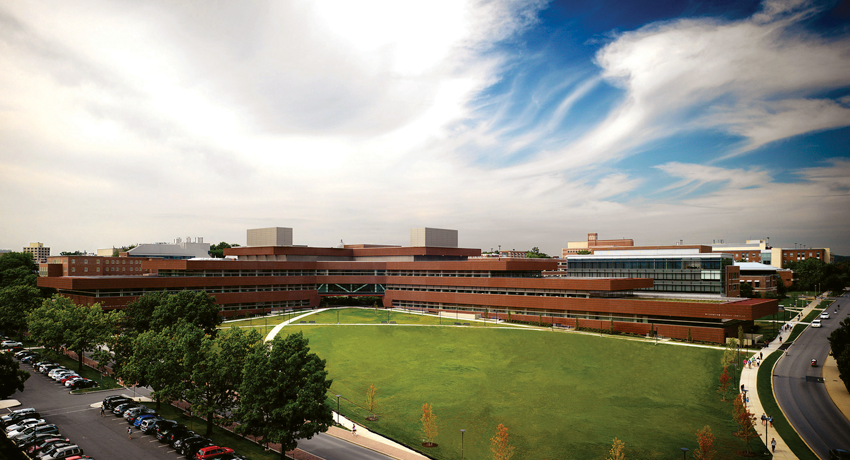A New Facility for 21st Century Science
The convergence of engineering, physical science, and life sciences, augmented by high-speed computation and data search, is opening new frontiers in human health, energy, and materials science. At Penn State, this convergence has a new home in the Millennium Science Complex, a 275,600 square-foot science building housing two of the University's premier research organizations - the Materials Research Institute and The Huck Institutes for the Life Sciences.
More than just a collection of laboratories and instruments, the MSC embodies a new style of research, in which experts from many disciplines coordinate their technologies and knowledge in ways that produce exponential advances. By providing the research space and the opportunity for intellectual exchanges, both formal and informal, the MSC is expected to generate large returns on the University's investment in infrastructure.
Designed by internationally renowned architect Rafael Vinoly, the MSC is one of the nation's first buildings specifically constructed to support the integration of the physical and life sciences. Instruments for the characterization of organic and inorganic materials will be co-located in a vibration-free quiet space, part of 50,000 net square feet of user facilities dedicated to current and future generations of characterization and fabrication tools. Shared meeting and common areas are designed to encourage the free exchange of ideas that existed in the great corporate labs that defined physical science and engineering in the 20th century.
MRI Wing Floorplans
1st Floor
2nd Floor
3rd Floor
Basement Floor
Building Fast Facts
- 275,600 gross sq. ft.
- 60,000 sq. ft. of green roof on five terraces
- 6,300 sq. ft. quiet lab
- 9,500 sq. ft. nano-clean room (Class 1000 / 100)
- 66 fume hoods
- 30 bio-safety cabinets
- Housing materials faculty and their research groups from the colleges of Engineering, Science, and Earth and Mineral Sciences
- Total cost of $225M

